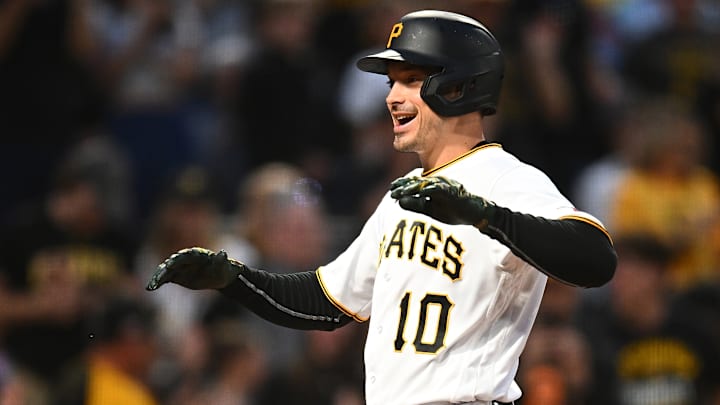Catcher - Francisco Cervelli
A trend you’re going to notice today is that almost every single player wasn’t drafted or signed by the Pittsburgh Pirates. They were drafted/signed by another team, and eventually made their way to the Bucs. The first of these players is catcher Francisco Cervelli, who spent five years of his major league career with.
Cervelli was originally an international signee by the New York Yankees in 2003. He was never one of the best Yankee prospects, but consistently posted a solid batting average while drawing walks at an above average rate. However, he hit for almost no power. He received some minor attention here and there, but never cracked any top 100 lists.
Cervelli debuted in 2008, and served as an up-and-down back-up/part-timer for the Yankees up until 2014. Across these eight seasons, Cervelli batted for a solid .278/.348/.381 line, .327 wOBA, and 101 wRC+. Cervelli had both a quality 8.2% walk rate and 17.8% strikeout rate, though this came with no power (.103 ISO). With the acquisition of Brian McCann and the rise of Gary Sanchez in their minor leagues, the Yankees sent Cervelli to the Pirates in exchange for left-handed reliever Justin Wilson.
Cervelli had big shoes to fill as the Pirates just saw former All-Star Russell Martin depart to Toronto in free agency. However, Cervelli more than made up for the loss of Martin, batting .295/.370/.401 with a .341 wOBA, and 117 wRC+ through 510 plate appearances. Cervelli was also one of baseball’s best defensive catchers with +10 defensive runs saved and a whopping +21.3 framing runs. With +5.9 fWAR, there was only one catcher in all of baseball more valuable than Cervelli, and that was former MVP Buster Posey.
2015 was a career year for Cervelli, as he struggled with injuries and performance in 2016 and 2017. Between these two seasons, he only batted .257/.362/.343 with a .317 wOBA, and 96 wRC+. For a catcher, these are pretty decent numbers, especially considering that he had a 12.6% walk rate. However, he only had zero DRS and +4.8 framing runs.
2019 ended up being Cervelli’s most productive year with the bat on a rate basis. In 404 plate appearances, Cervelli posted an outstanding .259/.378/.431 triple-slash, .355 wOBA, and 124 wRC+. Cervelli’s dozen home runs and .172 isolated slugging were both career bests, as was his OBP, wOBA, wRC+, and slugging percentage.
Cervelli opened 2019 in a platoon with Elias Diaz, but struggled with injuries once again, this time relating to concussion concerns. At one point, Cervelli was nearly ready to stop catching altogether. With this being the end of his contract and concerns if he’d ever catch again, the Pirates let the veteran catcher go so he could sign with the contending Atlanta Braves.
The catcher performed outstandingly with the Braves and Miami Marlins, the team he landed on for 2020, batting .259/.364/.541 with a 138 wRC+. However, this was only in 99 plate appearances. Cervelli retired following the 2020 season, but still stayed in professional baseball, returning as a coach for the San Diego Padres in 2022.
